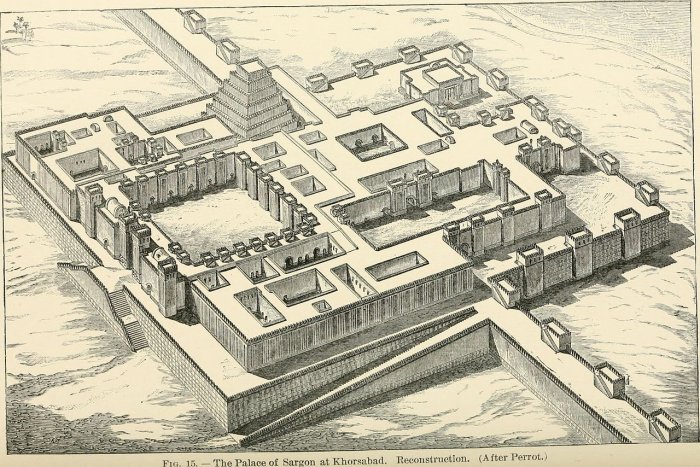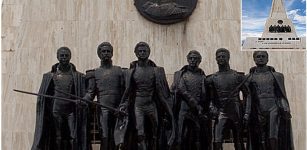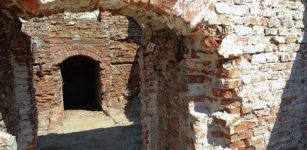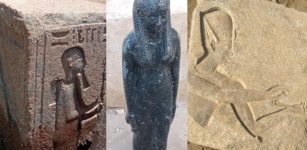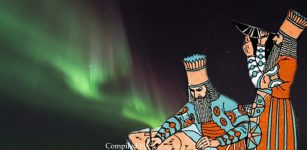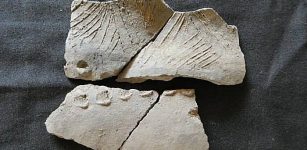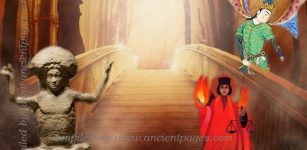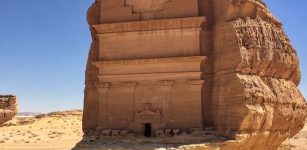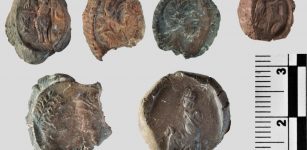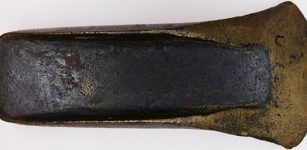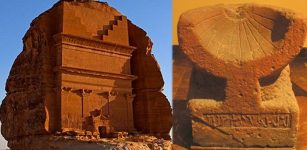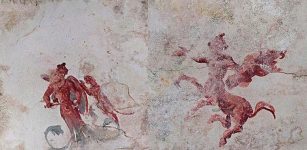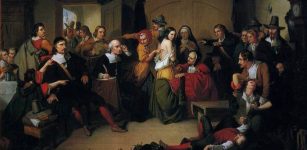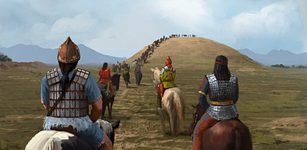Mystery Of Ancient Symbols On A 2,700-Year-Old Temple In Khorsabad, Iraq – Solved
Jan Bartek - AncientPages.com - The ancient symbols found on a 2,700-year-old temple in the city of Dur-Šarrukin, present-day Khorsabad, Iraq, have puzzled experts for over a century. This sequence of five symbols – a lion, eagle, bull, fig tree, and plow – was first documented by French excavators in the late 19th century through published drawings.
Late 19th century drawings of the tree and plough symbols published by French excavator Victor Place. Credit: New York Public Library
The city was ruled by Sargon II, the king of Assyria, from 721-704 BC, and these symbols were prominently displayed on temples throughout the ancient city. Over the years, various theories have emerged about their potential meaning, with some comparing them to Egyptian hieroglyphs, interpreting them as representations of imperial power, or speculating that they might symbolize the king's name.
However, Dr. Martin Worthington, an Assyriologist from Trinity College, has now provided an explanation for these mysterious symbols. His research sheds light on the significance of this ancient sequence, offering a deeper understanding of the cultural and historical context in which they were created.
Dr. Martin Worthington, a scholar from Trinity's School of Languages, Literatures, and Cultural Studies, has proposed a new interpretation of symbolic representations. He presents his theory that the Assyrian words for the five symbols – lion, eagle, bull, fig tree, and plow – contain, when arranged in the correct sequence, the sounds that spell out the Assyrian form of the name "Sargon" (šarginu). Furthermore, Dr. Worthington suggests that in instances where only three symbols (lion, tree, plow) are present at a site, they can still be interpreted as writing the name "Sargon," following similar principles.
Sargon II and dignitary. Low-relief from the L wall of the palace of Sargon II at Dur Sharrukin in Assyria (now Khorsabad in Iraq), c. 716–713 B.C. Credit: Public Domain
According to Dr. Worthington, who specializes in the languages and civilizations of ancient Mesopotamia, including those of the Babylonians, Assyrians, and Sumerians, the five symbols depicted can also be interpreted as representations of constellations. Specifically, the lion symbolizes the constellation Leo, while the eagle represents Aquila.
It is worth noting that many of our modern constellations have their origins in Mesopotamian astronomy, which was later adopted by the Greeks, explaining the similarities. Furthermore, the fig tree is believed to represent the constellation "the Jaw," which is no longer recognized today. This association is based on the phonetic similarity between the Akkadian words for "tree" (iṣu) and "jaw" (isu).
"The study of ancient languages and cultures is full of puzzles of all shapes and sizes, but it's not often in the Ancient Near East that one faces mystery symbols on a temple wall.
The effect of the five symbols, was to place Sargon's name in the heavens, for all eternity—a clever way to make the king's name immortal. And, of course, the idea of bombastic individuals writing their name on buildings is not unique to ancient Assyria," Dr. Worthington says .
Ancient Mesopotamia, encompassing modern-day Iraq and surrounding areas, was a cradle of civilization that was home to the Babylonians, Assyrians, Sumerians, and other influential cultures. Extensive research is being conducted on the region's rich history, drawing from the wealth of survived cuneiform writings. Notably, writing itself is believed to have originated in Mesopotamia around 3400 BC, making it one of humanity's earliest inventions. Interestingly, while Sargon's scholars may have been unaware of this historical context, their creation of new written symbols echoed a tradition that had begun over a millennium earlier in the same region.
Reconstructed Model of Palace of Sargon at Khorsabad 1905. Credit: Internet Archive Book Images - Public Domain
"I can't prove my theory, but the fact it works for both the five-symbol sequence and the three-symbol sequence, and that the symbols can also be understood as culturally appropriate constellations, strikes me as highly suggestive. The odds against it all being happenstance are—forgive the pun—astronomical.
This region of the world, which includes present-day Iraq and parts of Iran, Turkey and Syria, is often referred to as the "cradle of civilization." It is where cities and empires were born, and its story is a huge part of human history," Dr. Worthington says.
The Mesopotamian civilization's practice of counting in base 60 is the reason behind the modern convention of having 60 minutes in an hour. Additionally, Abraham, a central figure in Judaism, Christianity, and Islam, is believed to have originated from the Mesopotamian city of Ur.
The city of Ur, located near the mouth of the Euphrates River on the Persian Gulf, was once a thriving and prosperous port city. Its strategic geographical position facilitated its dominance in foreign trade, utilizing the ancient harbor of Dilmun as a transit point. Ur played a significant role in Sumerian history, with much of the region's historical events linked to this city.
Late 19th century drawings of the eagle and bull symbols published by French excavator Victor Place. Credit: New York Public Library
Notably, the Bible mentions Ur as the birthplace of Prophet Abraham, who embarked on his journey westward around 2000 BC, a pivotal event in religious history. The archaeological site of Tell el-Muqayyar in modern-day Iraq marks the location of the ancient city of Ur, providing insights into its past grandeur and importance in the region.
See also: More Archaeology News
According to Dr. Worthington, while solving puzzles related to Mesopotamian studies is an enjoyable aspect, the broader objective is to comprehend the intricacies and diversity of a vast portion of human societies and their cultural accomplishments throughout history.
The study was published in the Bulletin of the American Society of Overseas Research
Written by Jan Bartek - AncientPages.com Staff Writer



